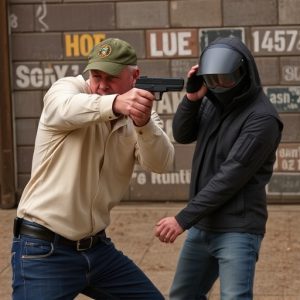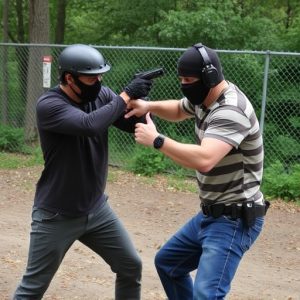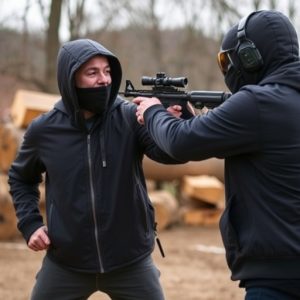Silent Stun Guns: Discreet Self-Defense Options Compared
Silent stun guns offer a discreet and effective personal defense solution, launching specialized pro…….
Silent stun guns offer a discreet and effective personal defense solution, launching specialized projectiles at high velocity to incapacitate assailants from a distance. They are ideal for escaping or seeking help in situations where noise could be detrimental. Contact stun devices, smaller and subtler, provide immediate shocks through direct contact, suitable for close-quarters defense. Both types have merits and challenges: silent guns limit follow-up actions but offer better discretion, while contact weapons disrupt attacks instantly but are less furtive. When choosing a silent stun gun, consider power, range, discreteness features like low-profile designs, adjustable stim levels, waterproof ratings, and compact size for optimal self-defense.
In the realm of self-defense, the choice between projectile and contact stun weapons is a delicate balance. Projectile stun weapons, like dart-firing devices, offer range and discretion, temporarily incapacitating targets from afar. Conversely, contact stun devices rely on direct physical interaction to deliver an electric shock, ensuring immediate but localized effects.
This article navigates the advantages and disadvantages of each type, delving into factors crucial for discreet self-defense, specifically focusing on silent stun guns that blend effectiveness with stealth. By exploring these options, individuals can make informed decisions tailored to their personal safety needs.
- Understanding Projectile Stun Weapons: These weapons emit a powerful impact through projectiles like darts or balls, causing temporary incapacitation at a distance.
- Contact Stun Devices: Involve direct physical contact to deliver an electric shock, offering immediate but localized stun effects.
- Advantages and Disadvantages: Examining the pros and cons of each type, focusing on discretion, range, effectiveness, and legal considerations in self-defense scenarios.
- Choosing the Right Stun Gun for Discreet Self-Defense: Factors to contemplate when selecting a silent stun gun for personal safety, emphasizing features that promote stealth and effectiveness.
Understanding Projectile Stun Weapons: These weapons emit a powerful impact through projectiles like darts or balls, causing temporary incapacitation at a distance.

Projectile stun weapons are a discrete and effective option for personal defense, particularly in scenarios where noise could be detrimental. These innovative tools operate by launching small, specialized projectiles at high velocity, ensuring a powerful impact on the target’s body. The design allows users to incapacitate an assailant from a distance, providing valuable time to escape or call for help. This method is especially useful in close-quarters combat or situations where direct physical contact should be avoided.
Unlike traditional stun guns that rely on electrical shocks delivered through direct contact, projectile variants offer a silent and furtive approach. They are ideal for discreet self-defense, as they can be easily concealed and do not produce the characteristic noise associated with other stun devices. This feature makes them appealing to individuals seeking non-lethal force options without drawing unnecessary attention.
Contact Stun Devices: Involve direct physical contact to deliver an electric shock, offering immediate but localized stun effects.
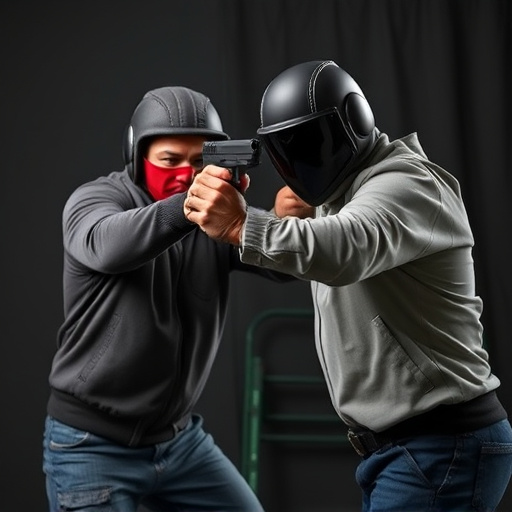
Contact stun devices, also known as stun guns or electric shock weapons, operate by making direct physical contact with the target. When activated, these devices emit a powerful electrical current that temporarily paralyses the muscles, causing the individual to lose balance and become immobilised for several minutes. The key advantage of contact stun devices lies in their immediate and localized effects, making them ideal for discreet self-defence scenarios where silence is paramount.
Unlike projectile stun weapons that require a safe distance between user and target, contact stun devices allow for close-quarters defence, ensuring the user can defend themselves effectively without drawing unnecessary attention. Their compact size and subtle operation make silent stun guns popular choices for those seeking non-lethal self-defence options while maintaining a low profile.
Advantages and Disadvantages: Examining the pros and cons of each type, focusing on discretion, range, effectiveness, and legal considerations in self-defense scenarios.
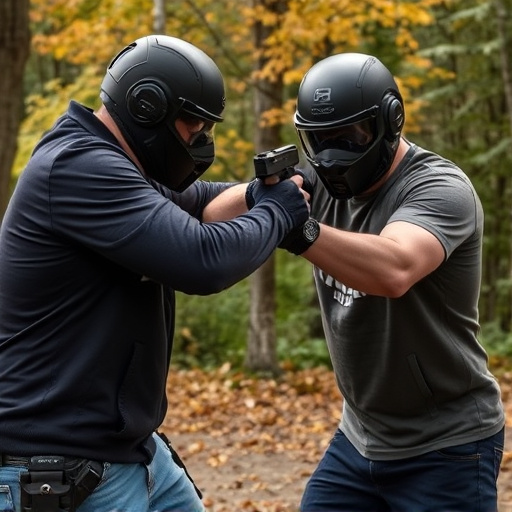
In the realm of personal defense, both projectile and contact stun weapons offer unique advantages and drawbacks. One prominent advantage of silent stun guns for discreet self-defense is their ability to incapacitate an assailant without drawing significant attention. Projectiles, such as stun arrows or bullets, provide a longer range and can be used from a distance, offering the user a tactical advantage in evading direct contact. However, this very discretion can also be a disadvantage, as it may limit the time available for a follow-up action against an attacker.
On the other hand, contact stun weapons like electroshock devices or batons ensure immediate and visible disruption of an attack, making them more suitable for close-quarters encounters. These tools are generally easier to deploy in legal self-defense scenarios as they clearly communicate the intent to stop an assault without ambiguity. Yet, their effectiveness may be compromised by factors like weather conditions, physical resistance from the target, and the risk of causing permanent injury if used improperly or on vulnerable areas. Legal considerations also differ between projectile and contact weapons, with regulations often dictating permissible use cases and storage requirements, especially for less conspicuous silent stun guns.
Choosing the Right Stun Gun for Discreet Self-Defense: Factors to contemplate when selecting a silent stun gun for personal safety, emphasizing features that promote stealth and effectiveness.
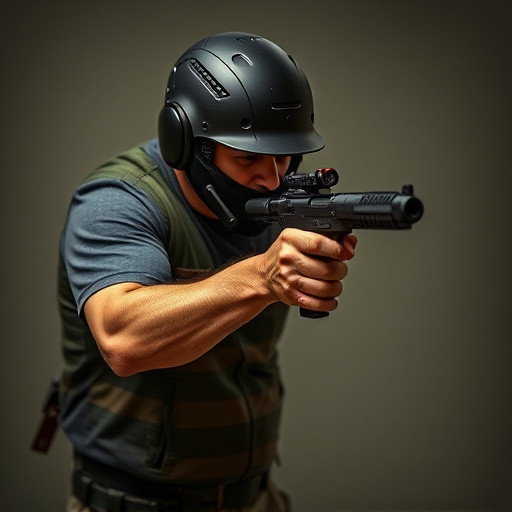
When choosing a stun gun for discreet self-defense, the primary goal is to select a weapon that combines stealth and effectiveness. Silent stun guns, designed with advanced technology, offer precisely this balance. Key factors to consider include power output—a higher joule rating ensures a more powerful stun without excessive noise—and delivery systems like contact probes or projectile darts, each offering unique advantages in terms of range and discreetness.
Additional features that enhance discreetness include low-profile designs that avoid drawing attention, adjustable stim levels to control the intensity of the shock, and silent activation mechanisms. Waterproof ratings are also essential for versatility in various environments, while a compact size ensures it can be easily carried without raising suspicions.
In the realm of self-defense, both projectile and contact stun weapons offer unique advantages, but silent stun guns stand out as a discreet option. These devices provide a balance between range and effectiveness without compromising stealth, making them ideal for personal safety in situations where quietness is paramount. When choosing a stun weapon, consider factors like power, range, and concealability to ensure you’re prepared for unexpected threats while maintaining discretion.
